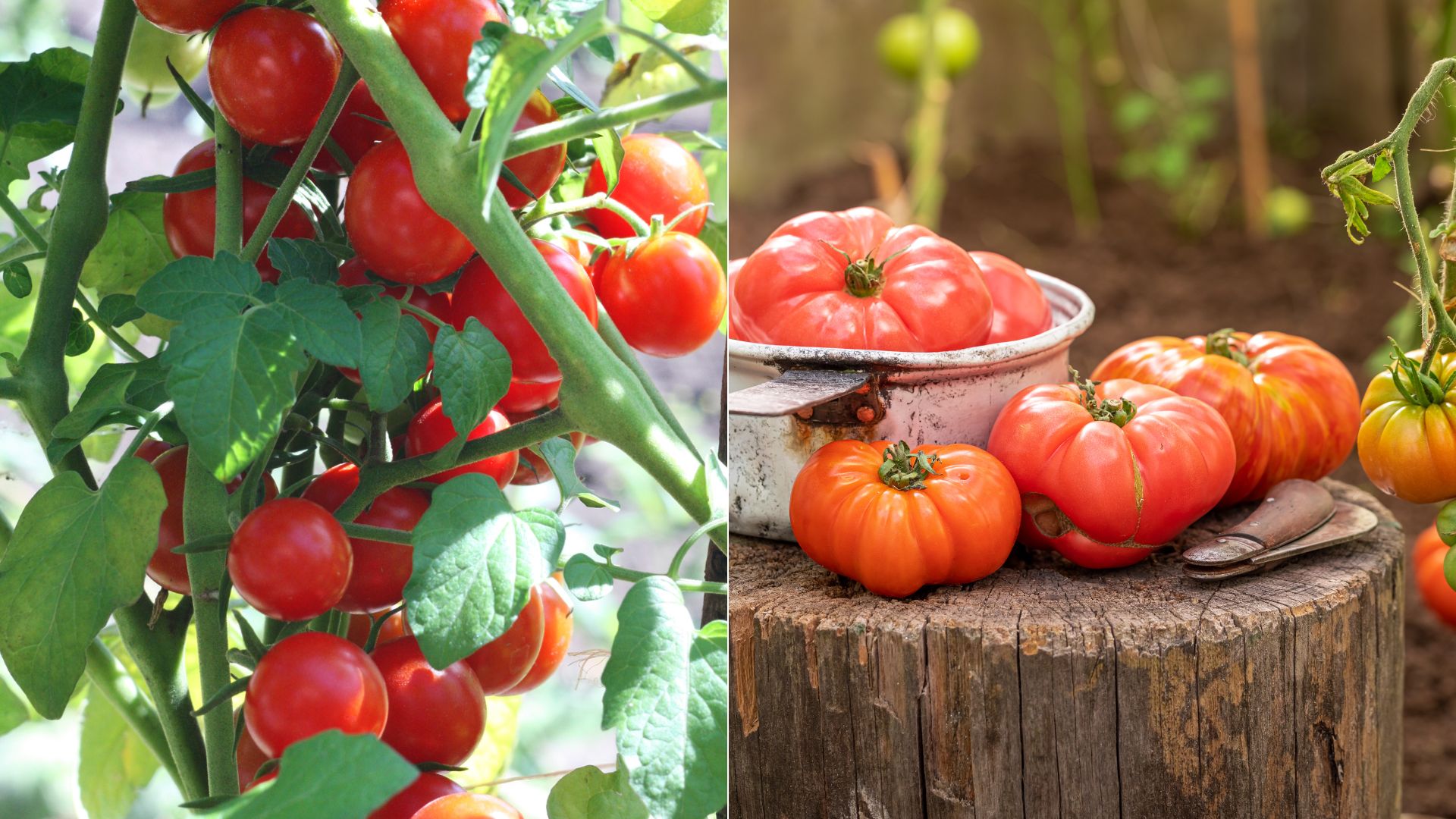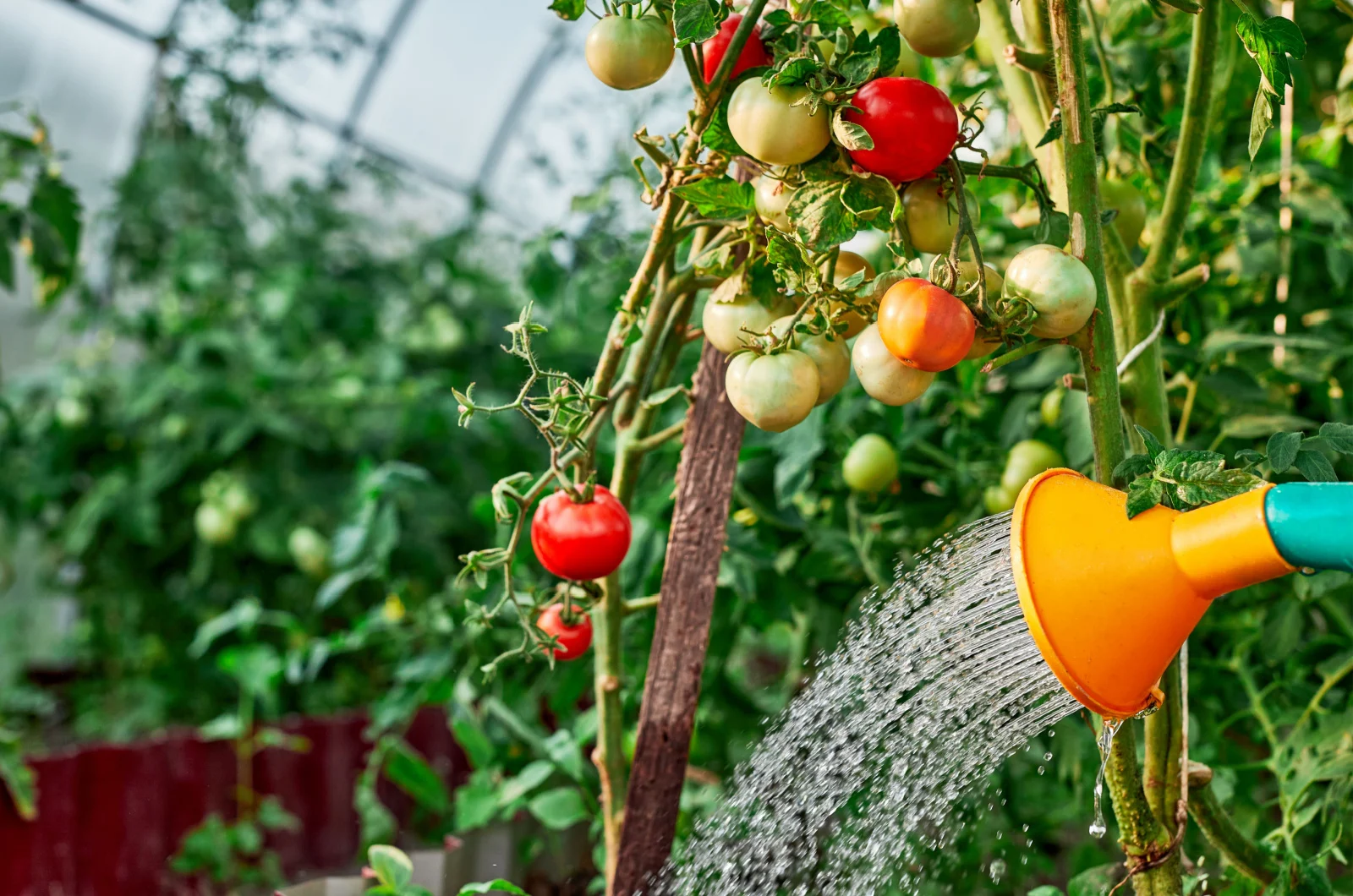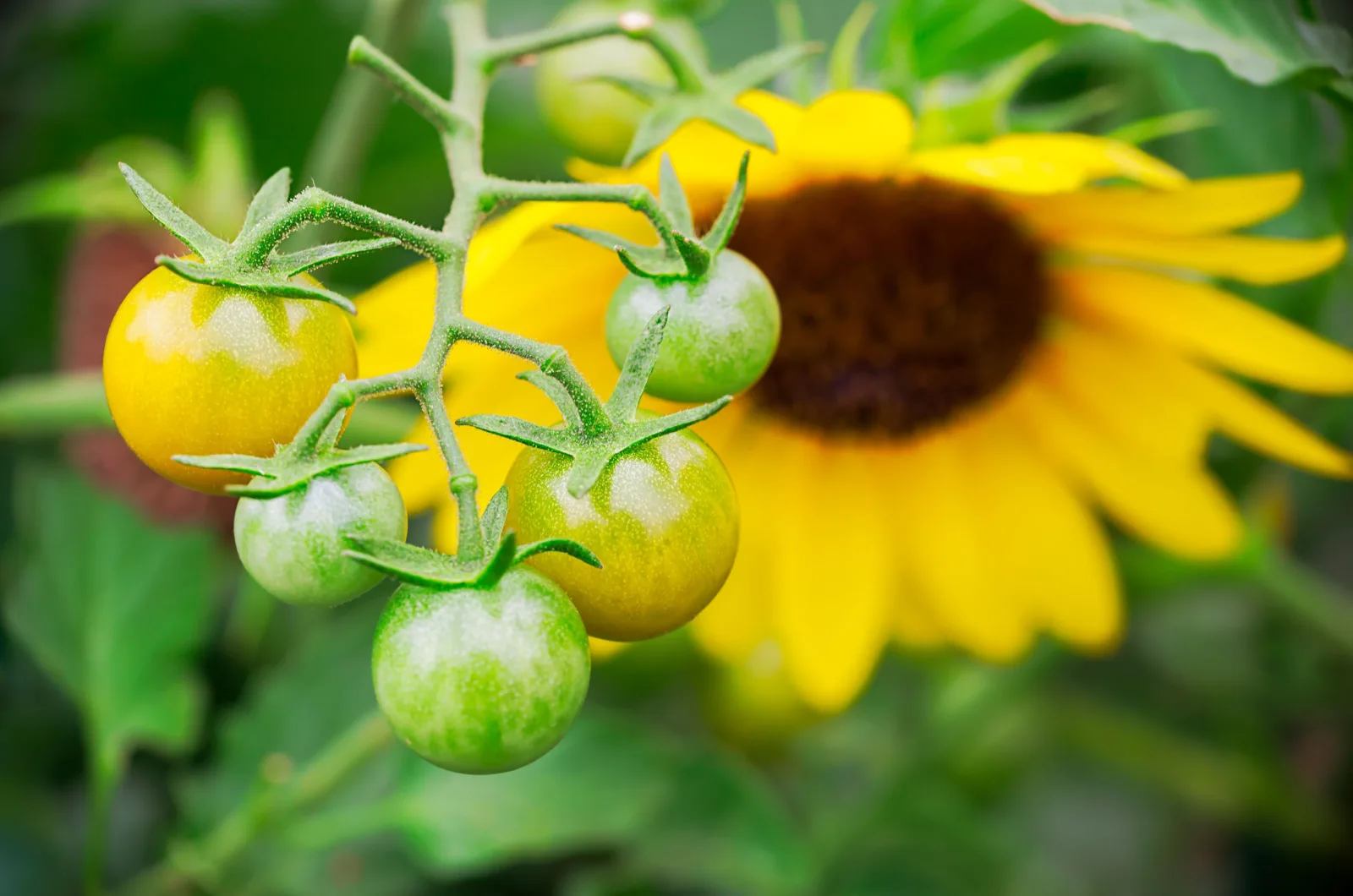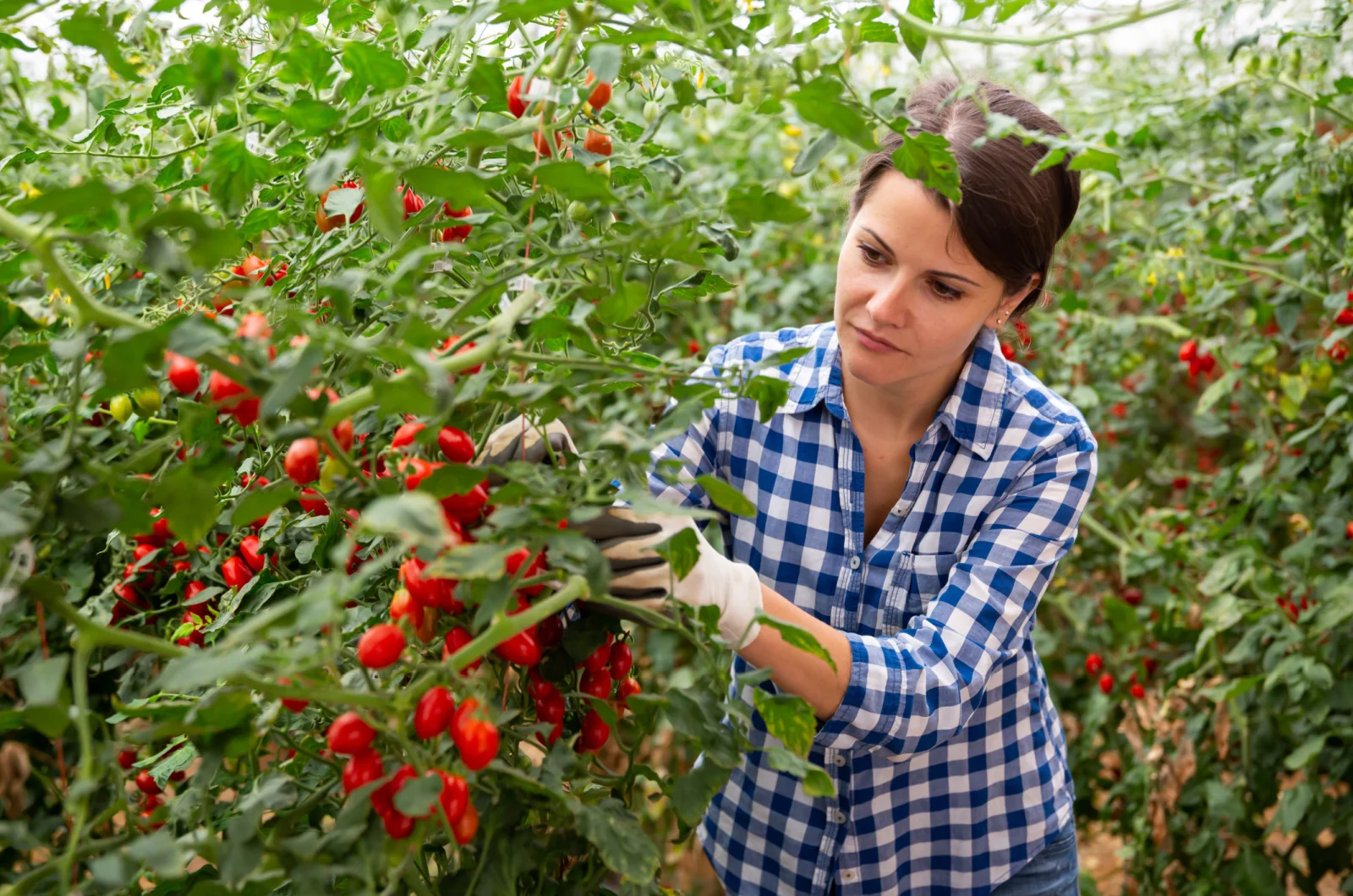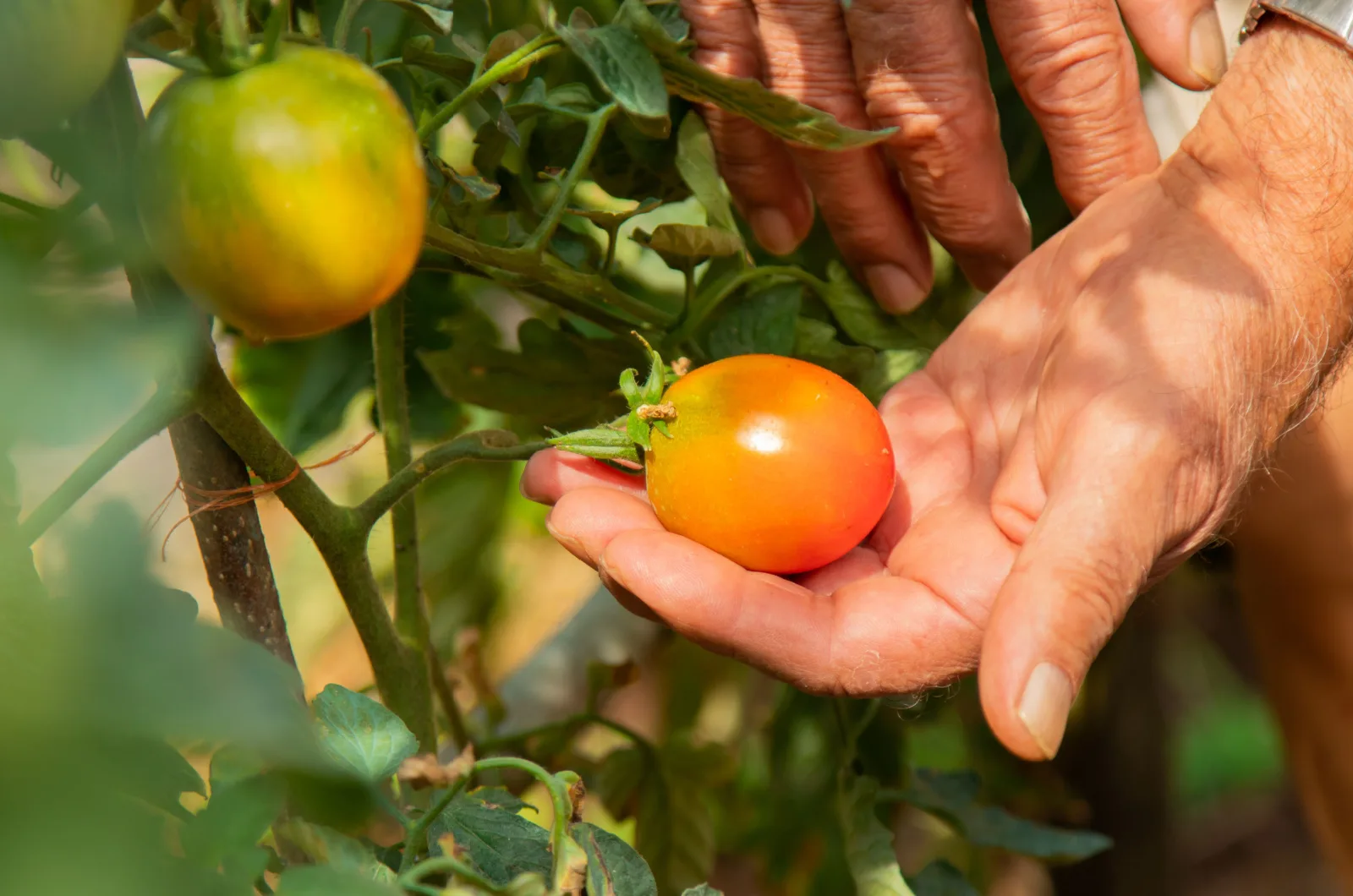You can buy tomatoes in the grocery store at any time of the year but admit it, their taste can’t compare in any way with that of homegrown ones!
To all the tomato growers out there, I know how long it takes for your tomatoes to ripen fully. Yes, patience is the key, but waiting that long can be exhausting.
I’ve caught myself many times looking at my green tomatoes on the vines wondering if they’ll ripen at all. Well, we all know they will but is there a way to speed things up a little bit?!
Yes, there is a way, or better to say ways to make garden tomatoes ripen faster. I’ll show you how to promote the ripening of tomatoes on and off the vine.
No time to waste, let’s get that red color ASAP!
1. Promote Airflow
Air circulation plays an important role in tomato growth. If it’s not adequate, your tomatoes are in trouble because they become susceptible to late blight and other fungal diseases.
Many growers aren’t aware of the fact that promoting airflow can speed up ripening. You should consider this factor even before planting.
So, when planting your tomato seedlings or sowing the seeds, pay close attention to spacing. The general rule is to leave at least 2 feet between each plant, however, it may depend on the variety. Spacing of more than 3 feet is typically not required.
Pruning your tomatoes, particularly its lower leaves and branches, will also enhance air circulation.
If you grow short determinate varieties cut off the leaves up to 8-10 inches. On the other hand, for larger indeterminate types, pruning 12-18 inches of the bottom leaves should suffice.
Sometimes, leaves can be too densely packed so you’ll need to remove some from the upper part of the plant. But, be careful not to remove too many leaves because you may expose the fruits to too much sun, which will burn them.
Also, make sure not to remove blossoms that give rise to fruits. Never prune more than ¼ of your tomato plant! Remember, upper leaves serve as protection from the sun and reduce temperatures around the fruits.
2. Water Accordingly
Watering tomatoes isn’t a hard task as long as you avoid waterlogging and inconsistent watering because they lead to two problems.
First, they can cause tomato fruits to split and crack and second, they can slow down the ripening process.
Too much water in the growing medium can severely harm your tomatoes; they won’t only ripen slowly but their growth can be significantly inhibited.
A rule of thumb is to give these veggies approximately an inch of water per week. This amount includes rainwater and supplemental watering.
There’s one simple method tomato growers, including me, use to determine the weekly amount of water these plants receive. You’ll only need a can of tuna, preferably an inch deep.
Sink it into the ground at the end of the row and check it after one week. Reading the results is simple; if the can isn’t full, give your tomatoes more water, and if water overflows, reduce watering.
If you use a drip irrigation system, make sure the line drips into the can, too.
3. Induce Managed Plant Stress By Delaying Watering
I’ve shown you what overwatering can do to tomato plants and now it’s time to see if underwatering is also that dangerous.
Surprisingly, no; it can actually create the opposite effect and enhance ripening. The story behind this is pretty simple.
Plants know that their life could come to an end if they don’t receive any water. The main goal of these living beings is to reproduce, i.e., produce fruits and seeds to give rise to another life.
So, your tomatoes will ‘think’ they are in mortal danger and send all their energy to ripening to generate new seeds. (1)
Interestingly, this method is frequently used to improve the flavor of homegrown tomatoes.
Bear in mind that water stressing tomatoes doesn’t mean you should completely cut off the water supply. Your goal is to gradually reduce the water these plants receive to trick them into ripening.
You can reduce supplemental watering or stop watering and leave the rain to do all the work. The latter technique is suitable only in regions with more frequent rainfall.
4. Keep Them Cool During Hot Weather
Tomatoes will complete their ripening growth stage at temperatures ranging from 70 to 75 degrees Fahrenheit.
If the temperatures increase, these veggies will need way more time to complete their ripening growth stage. The process will continue at the desired rate after temperatures drop.
Well, we can’t change the weather but there are some ways to help our tomatoes stay cooler. For instance, you can stretch a tarp to create a little shade. Also, you can cut the saplings above the patch.
My favorite method is putting floating row covers over them; it keeps tomatoes cool even during the hottest parts of the day. However, it’s always better to prevent the issue so planning where you’ll plant your tomatoes can help you avoid problems with high temperatures.
Your goal should be to find a location that receives approximately 6-8 hours of full sun daily. If the selected location receives more sun, change it if possible and choose a shadier part of your garden.
Alternatively, you can plant taller plants near your tomatoes; the perfect tomato companion plants for this purpose are sunflowers.
Interestingly, plants, including tomatoes, don’t use a lot of sun to complete their ripening stage. High sun exposure will have the opposite effect; sun scald and burns lead to discolored fruits and rotting.
Sometimes it’s impossible to protect tomatoes from high temperatures. In this case, you’ll need to be patient and wait until temperatures drop or harvest almost mature tomatoes. I’ll show you this technique in the following sections.
5. Keep Them Warm During Cold Weather
It’s completely normal for the temperature to drop in the fall but if they’re constantly under 70 degrees Fahrenheit, your tomatoes may not ripen at all.
You’ll need to help your veggies to stay warm enough. One of the most common techniques is putting floating row covers on the patches during the night (yes, they do magic in gardening).
This method will help your tomatoes survive through the first frost.
It’s not uncommon for temperatures to stay low during this part of the year. In this case, the only thing you can do is harvest green fruits and take them indoors to ripen.
6. Top Your Tomatoes
Growers have divided opinions when it comes to topping tomatoes. But if the end of the season is near and your region expects the first frost but your tomatoes aren’t ripe yet, you should consider the topping method.
This technique refers to removing the top tips of the main stems, preferably those placed just above the upper set of flowers.
I have to warn you that this technique only works on indeterminate tomato varieties. Remember, the determinate varieties set most of their fruits and don’t display new growth or produce blossoms after.
7. Prune The Roots
The next way to encourage ripening in these veggies is to prune the roots. This is actually another type of stressing the plant and works in a similar way as water stress and topping.
If your tomatoes are stressed, they’ll focus their energy on completing the ripening stage instead of displaying new growth.
This method may be a little bit riskier so if unsure, just try it on only 2 plants.
You first need to wait until the fruit clusters are set and very close to maturation. Here are a few tips for root pruning in tomato plants.
• Use clean and sharp cutting tools; a knife or a pointed spade shovel will work well.
• Stay about a foot from the plant base.
• Make an incision straight down.
• Sink the cutting tools approximately 8-10 inches below the soil surface. Healthy roots should be 8-10 inches long at this growing stage.
• Make a “C” cutting halfway while moving around the plant.
If you employ this technique right, you’ll make your tomatoes ripen faster and improve their flavor.
8. Remove Some Unripe Fruits
After you remove fruits from plants, they’ll focus their energy on ripening the rest of the fruits. The fewer fruits the plant has, the more energy it will have.
Interestingly, removing some immature fruits is actually a good method for boosting energy. You can use it if the end of the season is coming near and your region expects the first frost.
These fruits are less likely to develop further and ripen before temperatures drop down significantly.
Well, you may think that by employing this method, you’re sacrificing too many tomatoes. Technically, your storage of plump and juicy tomato fruits will be a little emptier but it’s way better than a bucket full of undeveloped tomatoes.
Remember, your plant will have enough energy for the almost mature fruits that are just one step from ripening.
9. Harvest Mature Tomatoes
I’m sure there are many of you who simply can’t wait for these veggies to ripen fully. Well, the easiest way is to encourage ripening but off the vine. All you need to do is harvest mature tomatoes that aren’t fully ripened and take them inside.
You can basically use this method at any growing stage and it will help you get more tomatoes.
For instance, after the first set of tomatoes mature, remove them to help your plant generate more blossoms for further fruit production.
As you may know, these veggies take way less time to mature off the vine. But, there’s one hack that can help you with this. Harvest only those tomatoes that have started ripening.
Your plant has ‘signaled’ the fruits to start ripening and the process won’t stop if you remove them from the vine.
How can you know if the fruits have entered the ripening stage? The first method is observing the color. Yes, all fruits are green at this point but the shade of green may tell you which are ready to ripen.
A dull and matte green hue on tomatoes means that they aren’t ready to ripen when removed from the vine. On the other hand, fruits that have a shiny green color (the skin reflects light) will successfully ripen inside.
The other method you can use to determine if tomatoes are in the ripening stage is by squeezing them gently. Those fruits that are hard when you squeeze them aren’t ready for ripening. On the contrary, slightly soft tomatoes have entered the final growth stage.
If you aren’t this impatient, you can simply wait until blushing occurs. Once you notice the fruits have got some red color, you can harvest them and take them inside to ripen.
Now let’s see some tips on how to speed up the ripening process indoors even more.
Speed Up Ripening Off The Vine
You should know that not all tomatoes will ripen at the same time. This mainly depends on the selected variety and how mature the fruits were when you harvested them.
Of course, those fruits that had some red color will ripen way faster than shiny green ones.
Never, ever, put these veggies in a refrigerator after the harvest. The simplest way is to put them on a counter in a spot that doesn’t receive direct sun.
By putting the unripe fruits in the refrigerator, you’re disrupting the ripening process and it won’t start again no matter what you do.
Here are the steps that will aid the ripening process indoors.
• Put the harvested fruits in a paper bag and fold the top over.
• Make sure not to put too many fruits because the air won’t circulate properly. Good airflow will enhance the circulation of ethylene gas the fruits generate when ripening.
• For those who are really, really impatient, simply put some other fruits in the bag. You can go with either bananas or apples. Don’t put more than one fruit in the paper bag!
You can always freeze your tomatoes, but wait until they’re fully ripe.
Increase Your Yield By Speeding Up Ripening
No matter how hard we try, waiting for garden tomatoes to ripen is really hard. Even though it would be best for the tomato season to last year-round, it’s unfortunately not possible.
However, using our guidelines for speedy ripening will get you plump and red tomatoes faster and you’ll also prolong the season. It’s a win-win situation!
Enjoy the full flavor of your homegrown tomatoes! You deserve it!
References
1. Takács, S., Pék, Z., Csányi, D., Daood, H. G., Szuvandzsiev, P., Palotás, G., & Helyes, L. (2020). Influence of Water Stress Levels on the Yield and Lycopene Content of Tomato. Water

